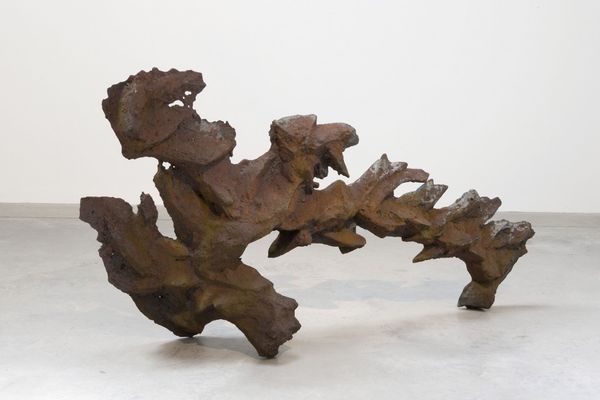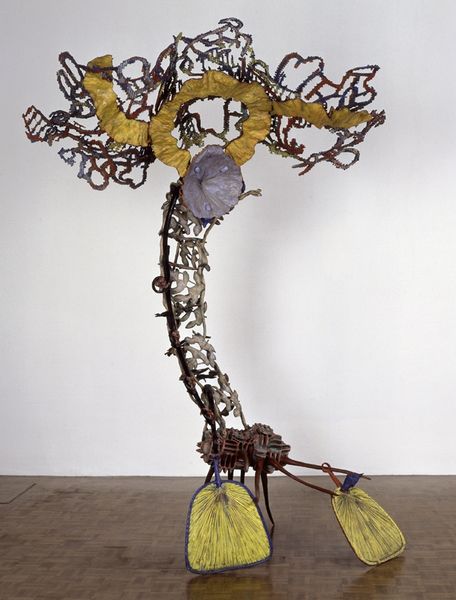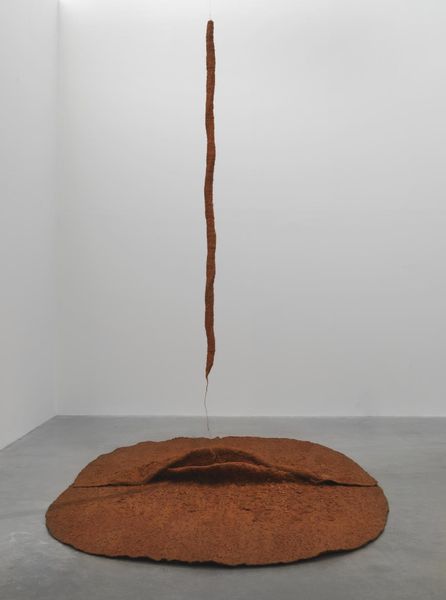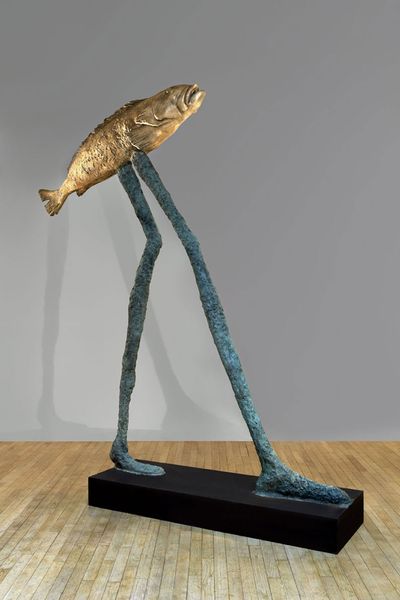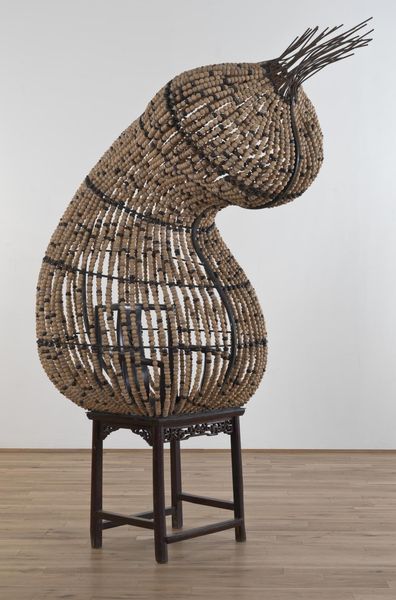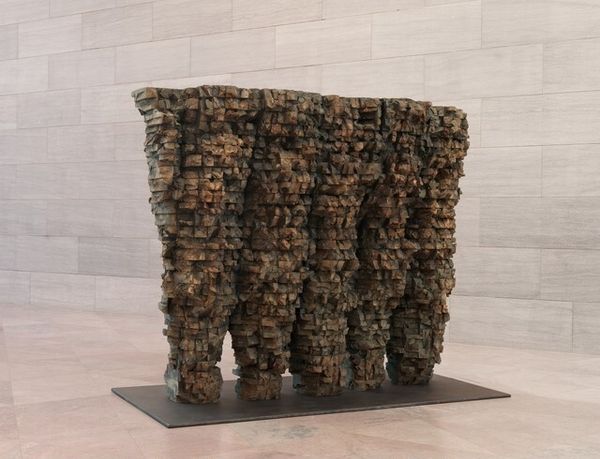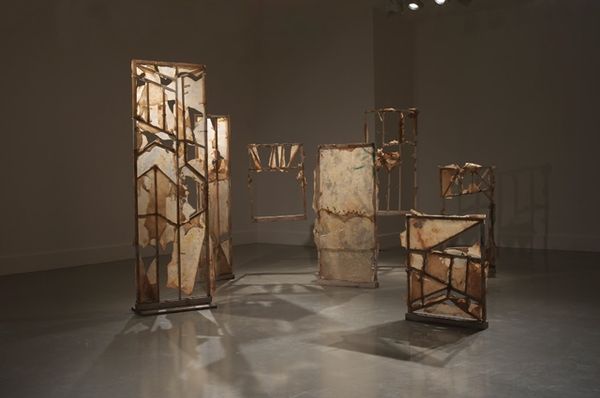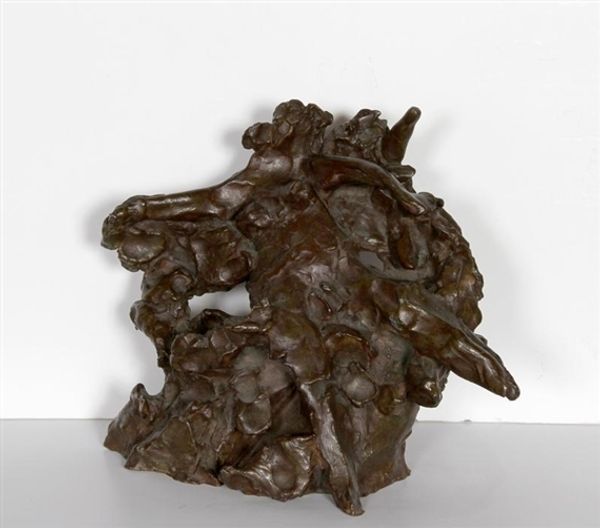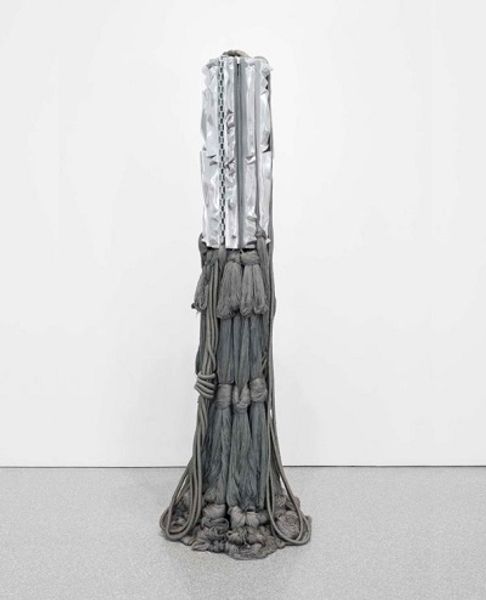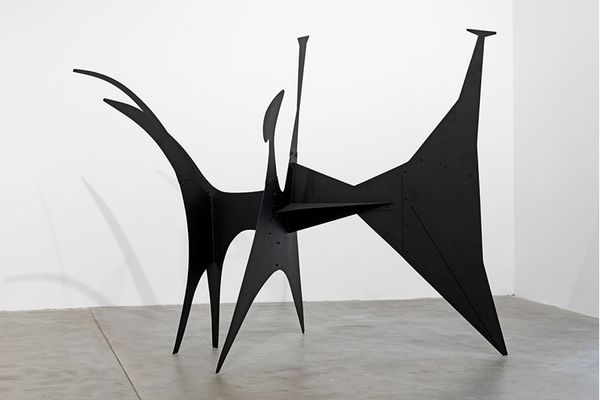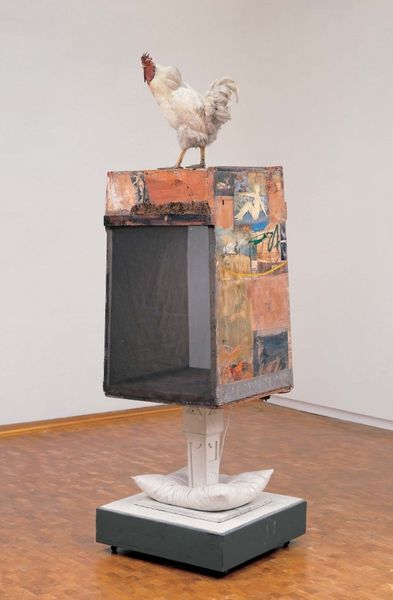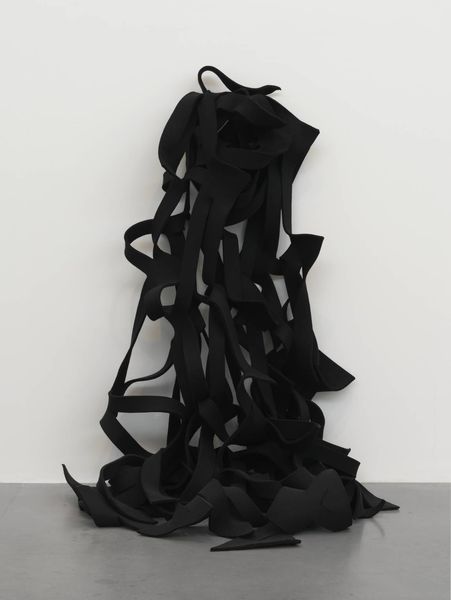
Copyright: Bill Bollinger,Fair Use
Curator: Standing before us is Bill Bollinger’s "Nike of Samothrace (Lake Series)," crafted in 1973 from bronze and other found objects. Its materiality strikes me first—that raw, almost primeval bronze. Editor: Yes, it’s arresting. Immediately, I feel a tension between weight and airiness, as if a fragment of petrified coral is somehow suspended. Curator: The title, of course, alludes to the famed Hellenistic sculpture. The original "Nike," or Winged Victory, stands as a potent symbol of triumph and divine power. Do you see any resonances here? Editor: The comparison is... audacious. Unlike the soaring grace of the Louvre's statue, Bollinger's piece feels grounded, even fragmented, echoing histories of power stripped away. It speaks more to loss than victory, to broken systems and the decay of ideologies. Curator: Interesting point. Consider, though, that the original Nike is also headless and armless. Perhaps Bollinger is engaging with the inherent incompleteness of historical narratives, reminding us that symbols are always interpreted through the lens of the present. Editor: And whose present? Bollinger, a white male artist working in the 70s, certainly has a specific perspective. How does this inform our understanding, especially considering the debates around monuments and historical representation today? It does call for a renewed criticality toward historical icons. Curator: Perhaps, rather than simply replicating a classical ideal, Bollinger sought to question its very foundations. He transforms a symbol of victory into something visceral, even vulnerable. Editor: In this vein, the abstraction strips away any easy reading. What remains is this crude monument of memory. Curator: By manipulating these visual vocabularies of classical antiquity, Bollinger has created a resonant modern artifact, its form at once ancient and strikingly new. Editor: In short, Bollinger’s creation demands that we confront not only what it means to commemorate victory but also what it means to memorialize loss. It pushes us to re-evaluate what narratives we uphold.
Comments
No comments
Be the first to comment and join the conversation on the ultimate creative platform.
